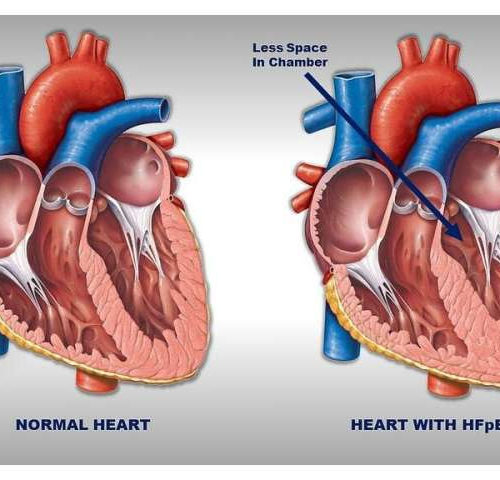by Nancy Fliesler, Children’s Hospital Boston Gene therapy could potentially restore the orderly structure of dyads in heart muscle (as in the top image) and help reverse heart failure. Credit: Fujian Lu, PhD, Pu Lab, Boston Children’s Hospital Our heart muscle is studded with tiny dyads, intricately designed structures that manage incoming electrical signals and calcium...
Tag: <span>heart muscle</span>
Tiny deletion in heart muscle protein linked to long-term effects on adult atrial fibrillation
JULY 25, 2024 by Jeff Hansen, University of Alabama at Birmingham Graphical abstract. Credit: iScience (2024). DOI: 10.1016/j.isci.2024.110395Millions of adults have atrial fibrillation—an irregular beating of the upper chambers of the heart that yields increased risk of heart failure, stroke and death. Many genetic mutations in the developing fetus can lead to adult atrial fibrillation,...
Vest can detect earlier signs of heart muscle disease
by University College London A volunteer wears the ECGI vest. Middle: Dr George Joy with the vest on a mannequin. Bottom: The team of researchers and staff who have been involved in the vest’s use and development. Credit: UCL Institute of Cardiovascular Science / James TyeA reusable vest that can map the electric impulses of the...
Scientists discover protein partners that could heal heart muscle
by University of North Carolina Health Care Human fibroblasts reprogrammed into cardiomyocyte-like cells. Immunofluorescence shows different molecules: DNA (blue), cardiac Troponin T (orange) and αActinin (green). Credit: Qian Lab, UNC School of Medicine Scientists at the UNC School of Medicine have made a significant advance in the promising field of cellular reprogramming and organ regeneration,...
New viral vectors for targeted gene therapy of heart muscle cells
by Medizinische Hochschule Hannover Graphical abstract. Credit: Molecular Therapy (2022). DOI: 10.1016/j.ymthe.2022.07.003 Gene therapies aim to cure severe, barely treatable monogentic diseases caused by a defect in a single gene. Medical hopes are correspondingly high. Some gene therapies have already been approved in Europe—for example, for spinal muscular atrophy (SMA), a congenital neuromuscular disease with severe muscle...
Mouse study suggests manipulation of certain nerve cells can help regenerate lost heart muscle
JOHNS HOPKINS MEDICINE IMAGE: THIS IMAGE ILLUSTRATES THE NOVEL ROLE OF HEART NERVES IN POSTNATAL HEARTS WHERE SYMPATHETIC NEURONS INFLUENCE CLOCK GENES TO REGULATE CELL CYCLE PROGRESSION OF HEART MUSCLE CELLS. CREDIT: PHOTO COURTESY OF EMMANOUIL TAMPAKAKIS Human heart muscle cells cease to multiply after birth, making any heart injury later in life a permanent...
Converting scar tissue to heart muscle after a heart attack
UNIVERSITY OF TSUKUBA IMAGE: Researchers from the University of Tsukuba showed that cardiac scar tissue (fibroblasts) can be directly reprogrammed to heart muscle cells (cardiomyocytes) in mice. By treating mice post-heart attack with a virus carrying cardiac transcription factors, they found that new cardiomyocytes were formed by fibroblasts converting into cardiomyocytes as opposed to fibroblasts...
Obesity weakens heart muscle in patients with a common type of heart failure
by Johns Hopkins University School of Medicine Two hearts, a normal on the left and one with heart failure with preserved ejection fraction (HFpEF) on the right. The heart with HFpEF has a thicker, stiffer left ventricular wall and therefore, less room in the ventricle chamber to fill with an adequate amount of blood to be...







